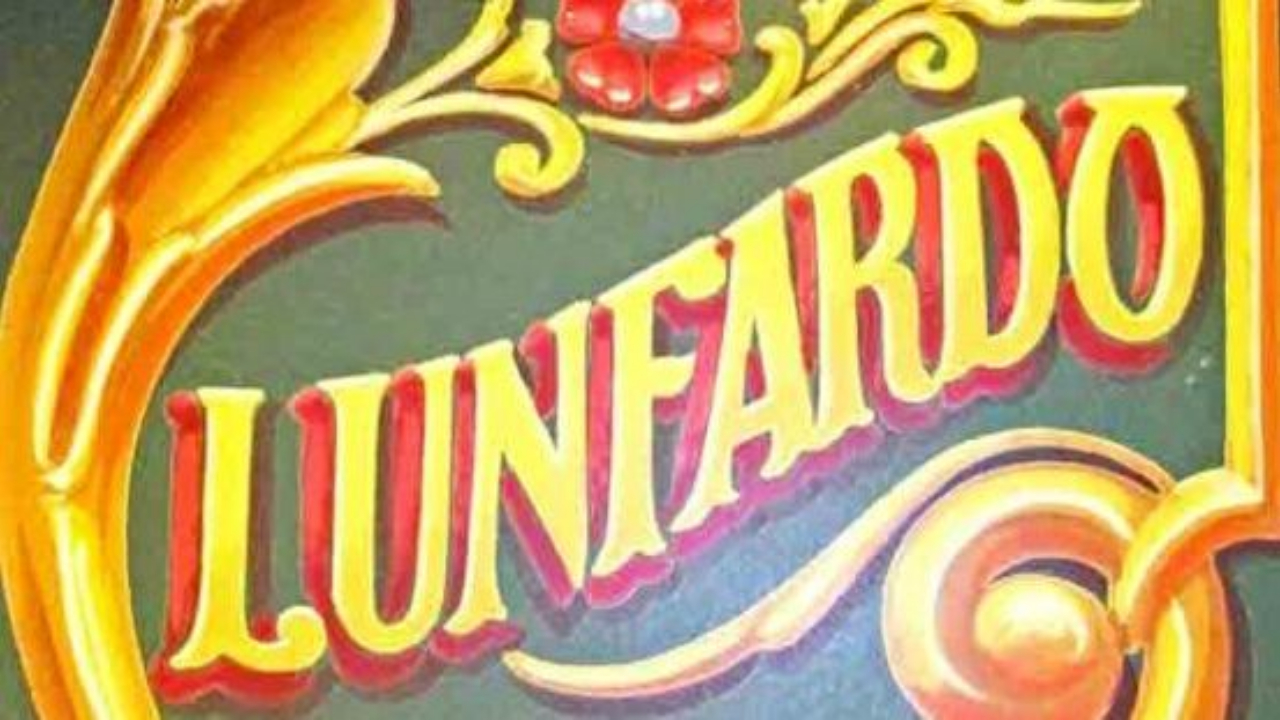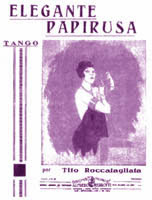Lunfardo, the secret language of the Tango Rioplatense
Jan 18, 2023
© by Mariano Diaz Campos
Like all big cities Buenos Aires has many faces. With the great amount of people you have all sort of social groups flocking together in their bubble, with their own codes, and their own language. So also Buenos Aires.
Think of London with the cockney English, the 'argot'-language of Paris, or the mafia slang of New York influenced by the Italian background. Buenos Aires has his own language which is called 'lunfardo'.
One of the first words I learned from my father in lunfardo was how to turn a word around like the word 'leche' which means milk. If you change the two syllables of 'le-che', you get 'chele'.
Argentineans call the inversion of words 'vesre'. I directly started to experiment to inverse other words like 'café' is 'feca' and my favourite 'let's have a pizza' is 'vamos a comer una zapi'.
The word I liked the most was 'quetejedi', which my father often used.
A little time later I discovered that if you say 'Ese es el que te dije', which means 'that's the one I was talking about', and you use the last three words where you inverse around the last one, you get indeed 'quetejedi'.
Historical sources say the word lunfardo comes from Lombardo, a northern region of Italy. And many words in lunfardo have Italian origin like the word 'gamba' which means leg and I mistakenly thought it was a Spanish/Castellano word for leg. But leg in Spanish is 'pierna' and not 'gamba' which means shrimp in Spanish but 'leg' in Italian.
Lunfardo is a typical cocktail language with words derived from Galicia, Catalan, Italy, French, English, Eastern Europe, Afro Argentineans and Native Argentineans. With many times inversing it. And because of the immigrant background it fits Buenos Aires and Montevideo, after New York, the towns with a European immigrant culture.
Sometimes a word evolves in to a new meaning, like the word 'papirusa'. Today papirusa means beautiful woman in lunfardo. The myth says that the Eastern European women begged for 'papirosa' (Papirosa is Russian for cigarette) and at the same time lure a male passerby for a chat.

Another example is the word aurelí which football players use to shout before a football match. Because football came from English train-rail workers. The train rail was build by English engineers in Argentina. That's why the metro and the train lanes are reversed as in right is left and left is right, like it was custom in England. When the English train-rail workers were free from work they played football and shouted 'are you ready?!' before starting a match, which Argentineans adopted as 'aurelí?!'.
Lunfardo words were created in many different ways: inversing the words, contracting the word, rename a foreign word, or adding a meaning to a word that has a complete different background. And on top of that, this new invented word will be inversed again.
The Lunfardo language is also commonly known as the language of crooks who in prison don't want notify the guards what they are up to. But I think that is too far fetched. Too many words have nothing to do with prison life. And prison guards, derived from the same social background, would know the language anyway.
So it is inevitable that these words show up in the tango lyrics. I want to add a famous tango called 'Cambalache' -released in 1934- of which the music and lyrics are written by famous tango poet Enrique Santos Discépolo. In a new blog, I will talk more about the lunfardo language, Discépolo and the tango Cambalache. Cambalache means 'chaos' or 'mix-up'. You can already listen to this tango in the video below.
Here is a list of some words in lunfardo:
Afanar: 'to steal', from old Arabic-Castillian Spanish. Which means to court a lady but in time it changed in to the meaning 'stealing'
Gotán: inverse for 'Tango'. The tangroup Gotan Project made this 'vesre' word for tango known worldwide. Often mispronounced as gótan, it is actually pronounced as gotán.
Chamuyar: means 'small talk'. From Spanish Gypsy language 'chamullar'. Very important for tango dancer where the 'chamuyo' in between tango songs is essential to getting acquainted with somebody.
Facha: appereance form Italian word 'faccia'
Groso: important, big. From Portugese 'grosso'
Guita: money. From popular Spanish
Laburo: work. From Italian 'lavoro'
Malandra: delincuent, criminal. From Spanish 'malandrin'. Note the tango of Osvaldo Pugliese called 'Malandraca'.
Matina: morning. From Italian 'mattina'.
Morfar: eating. For the Italian word mouth 'morfa'.
Pibe: little kid. For the Genoves-Italian word 'pivetto'.
Pilcha: clothing. Native Argentinean Auracanian language.
Quilombo: chaos, mix-up. Afro Argentinean. Rebel held stronghold. Derives from Brasil where escaped slaves rebelled against their masters.
Trucho: fake. From Spanish word 'trucha' which means 'person you can not trust'. In Argentina something which is fake, like the Louis Vuitton handbags you see on the street or a fake 100 pesos bill, is called trucho.
Cambalance - Tango 1934
Música y Letra: Enrique Santos Discépolo
In this video you can listen to the interpretation
by Miguel Caló and singer Robert Arrieta, recorded in 1947 by Odeon.
About the author Mariano Diaz Campos
"I was born in Buenos Aires, Argentina. Through my family I have been intimately involved with the culture of Tango all my life. I have been an Argentine Tango dance performer, choreographer and instructor for over 30 years. My grandfather had a milonga in Tapalqué and my great aunt had a milonga in Buenos Aires during the Golden Era and after. Both my parents are professional tangodancers. They were solo dancers of the orchestra of Osvaldo Pugliese and they worked intensively with Antonio Todaro and Suzuki y Pepito Avellaneda. Todaro gave me my first tango shoes. I profoundly love Tango dancing, music, history and culture. I am a tanguero and a milonguero. My interests beside tango are history, journalism (graduated journalism in 2001) and mindfulness (certified Mindfulness Based Trainer since 2021)."


